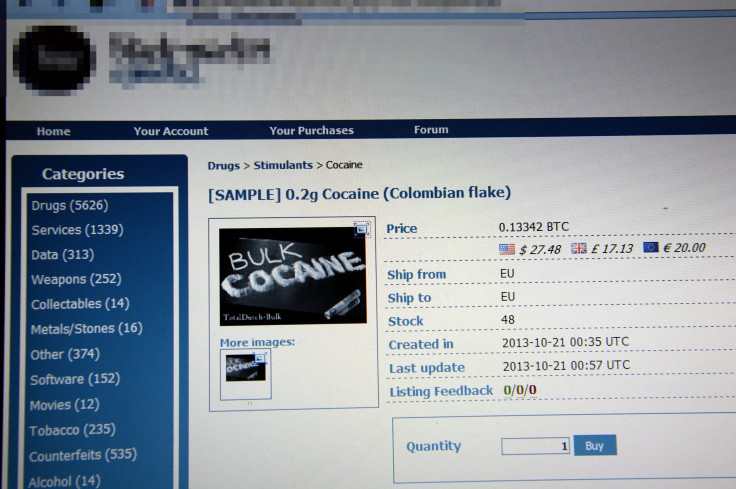MDMA, Cocaine Sales Help Dark Net Drug Sites Make Over $100 Million Annually, Without Shuttered Silk Road

Combined revenue from the most popular dark Net sites, the online black market, exceeds $100 million every year. That’s according to researchers who found that, even after the founder of the Silk Road market was sentenced to life in prison, narcotic customers are investing more than ever into underground drug dens.
Nicolas Cristin and Kyle Soska, researchers at Carnegie Mellon University, used automated software to track the visible pages of 35 dark Net markets. They compared the number of listed products with the number of product reviews, which are often required on drug sites and assumed to represent a single purchase order. Even before it was presented at the Usenix Security Symposium Wednesday, their report, “Measuring the Longitudinal Evolution of the Online Anonymous Marketplace Ecosystem” was the most complete picture of dark Net drug sales yet released.
The dark Net is made up of a few dozen criminal websites that exist in the much wider deep Web, defined as the vast online world that’s inaccessible with a traditional engine. Instead, users trying to access deep Web sites -- anything from an anarchist book club to a rape counseling forum to the dark Net drug sites -- must download the free, heavily encrypted anonymity browser known as Tor.
Silk Road, the best known of these drug sites, was shut down in 2013 and its founder Ross Ulbricht sentenced earlier this year to spend the rest of his life in prison. The judge who sentenced Ulbricht told the 31-year-old Texas native that, as the proprietor of an unprecedented business model, Ulbricht would need to “pay the price for that.”
But other dark Net drug dealers show no sign of shutting down their markets, if the CMU study is any indication.
“The market is relatively stable, with sales between $300,000 and $500,000 a day,” Christin told Wired, adding that growth has exploded since the Silk Road brought in $22 million three years ago. “It’s not huge, but it’s not negligible, and it’s a lot bigger than we had reported in 2012.”
Marijuana and MDMA, the psychoactive component in ecstasy and molly, each make up about 25 percent of the sales on the dark Net. Cocaine and other stimulants make up another 25 percent at any given time, while heroin and opioid sales stand at 10 percent. Sales of prescription drugs (Viagra, OxyContin and others) are steadily on the rise.
The second major finding: 70 percent of the dark Net drug markets examined never sold more than $1,000 in substances. Only 2 percent sold more than $100,000, meaning headline makers like the Silk Road and Agora are still outliers, while the vast majority of drug sales were competing with street dealers.
It’s also clear that the threats to the dark Net markets -- police investigations, sudden site disappearances and the exit scams that occur when operators make off with users’ bitcoin wallets -- actually aren’t that much of a threat at all. Take Operation Onymous, the police investigation that took down the Silk Road 2.0 and other smaller markets, as an example.
“These are all events that generated substantial doubts in both vendors and consumers regarding the safety and security of operating on these marketplaces,” the researchers wrote before explaining that activity returned to normal levels within weeks of each major event. “It’s not clear that takedowns will be effective; at least we have found no evidence they were.”
© Copyright IBTimes 2024. All rights reserved.





















